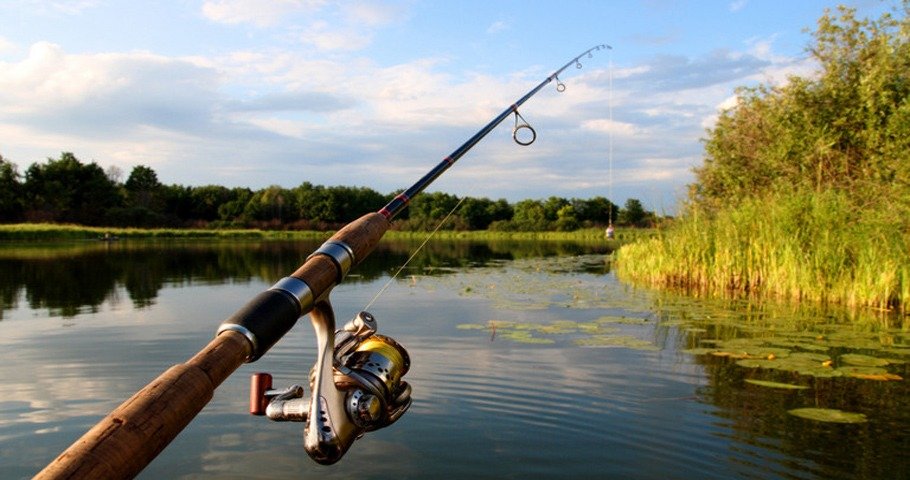Without a doubt fishing is one of the most popular pastimes you will find anywhere in the world. It is a challenging yet relaxing sport to say the least. I myself find it one of the best ways to take my mind of my problems and relieve my stresses; this holds true even if I donât catch any fish on a particular day. With that being said, my main goal when doing it is still to get the thrill of landing a big fish but you will never catch fix consistently if you donât know how to cast a fishing rod.
Why is properly casting your fishing pole so important? Itâs all about attracting fish to your line. Simply put, if you donât cast your bait or lure into the right area of the water you are most likely not going to attract and catch any fish. That is why I am going to explain to you the best way to cast your fishing rod and increase your chances of landing more fish on a regular basis.
Moreâ¦
What You Will Need To Get Started
Of course you need more than just a fishing pole and a spinning reel to get started. You will also have to decide of you are going to attract the fish you are going after with lures or bait. You will also have to have weights available to put on your line depending on what depth you are fishing at and to compensate for any wind conditions as you are casting.
Here is what you will need to get started learning how to cast:
Pro Tip
- Fishing rod w/ attached spinning reel
Fishing reels come in both left and right handed models and as a general rule you want to do the casting motion with your dominant hand. That means you will want to select a spinning reel with the reel handle facing towards your non-dominant hand (if you are a righty it will face to the left and if you are a lefty it will face toward the right)
- Tackle box
- Assorted lures
- âSplit shot for line weight
- Bobbers
- âPractice plugs (perfect for dry casting)
- Other items you can attach to the end of your fishing line to simulate the weight and size of baits you will be casting when practicing.

Pro Tip
It goes without saying that you need a decent fishing rod and reel setup in order to help you with your casting. Too many people when starting out buy really cheap equipment that inhibits their ability to properly cast with their fishing pole.
Try to get a fishing setup that makes casting a little bit easier. You donât necessarily have to spend a lot of money to do this. Online reviews and fishing equipment sales personnel can be an invaluable source to help you make the right purchasing decisions here.
Step By Step Explanation Of The Art Of Casting A Fishing Line
Ok, so you have assembled everything you need to get some casting practice and you are ready to go. Now it is time to discuss the technique that most veteran anglers have found to be an effective way to cast a fishing line.
I was once a beginner fisherman too and needed to learn how to cast a fishing line too. I learned from my father and some other long time fisherman as I was growing up but I was able to significantly improve my casting later on by studying video of some of the most prominent professional fisherman.
Here is what I have found through trial and error to be the soundest way to be accurate and get good distance when casting out your fishing line:
Step 1: Get Ready To Learn
The first thing you have to do in order to be able to get the most out of this tutorial is to be ready to learn. That means you have to not only have to have your equipment ready but you must also be mentally prepared to learn too which can sometimes be harder than the other.
Make sure you have your fishing line spooled up onto your spinning reel and that you also have some wait on the end of that so you can do some practice throws.
Learning properly also requires that you have the desire to be a good fisherman and you must focus on what I am teaching you too. When you have got this covered only then can you move on to step two.
Step 2: Proper Hand Positioning
Perhaps the most critical part to casting is proper hand positioning. Without it you will have a difficult time when casting your fishing rod to say the least. So for that very reason pay close attention here. If you get hand positioning when casting down so that its second nature to you, then will have already improved your casting ability significantly just by mastering this simple step.
Start by placing your dominant hand on your fishing rod directly over the reel. You will also want to place the rod foot (the part that attaches the spinning wheel to your fishing rod) so it rests between your middle and ring fingers on your dominant hand. This is done to give you the most control possible over your rod when casting.
Your other hand is now free to reel in the line, work the spinning reel bail or to hold your beverage of choice while you are drinking it. Many fishermen will rest their non-dominant hand on the reel handle when they are not in the process of casting it.
If you have a reel that has no rod foot then it faces up and your dominant hand goes ever so slightly behind the reel.
Step 3: Getting Ready To Cast Out The Line
I know you are excited to let your cast rip and fly but there are a few simple steps that must be done before you can actually start to cast.
First off you need to pull out about 6 to 8 inches of line so there is not so much tension on the pole and reel. Your reel is designed to let out line even with the bail closed (called drag).
Once that is done turn your spinning wheel roller until it is toward the top side of your reel. You will know when itâs in the right position because you will be able to put your dominant index finger on it.
Next pull the line lightly with your dominant index finger up against your fishing rod. After that is done open the bail with your non-dominant hand. Donât worry because the index finger that is holding the line will keep too much line from coming out and interfering with your cast and making a mess.
Step 4: Casting The Line
The first thing you will need to do as you get ready to cast is to face your body squarely in the direction you want to cast your lure or bait. You will also need to face your rod in the direction you want to cast also.
You have probably noticed by now that your fishing pole has a lot of flexibility to it. That is used to your advantage when you are casting. It is this whipping action when the rod flexes that will give you the extra distance you need to make long casts.
Next you will bring your fishing rod straight up and ever so slightly back. You are now ready to make your cast.
Your cast is initiated by bringing your arm forward and then kind of snapping your wrist in a flicking or whipping motion. Your arm will come through quickly forward and at the end of the cast will be facing straight out in front of you.
As you bring your arm forward during the cast you will have to work on the timing of releasing the line with your index finger at the right moment to get the lure or bait to travel to your intended casting spot. If you are casting your fishing line too high you are releasing the line with your index finger too soon and casting the line low means you are releasing your index finger to late.
Step 5: Once Your Lure Or Bait Hits The Water
There is a lot to be done still in casting once your lure or bait hits the water but that is for more advanced lessons in fishing knowhow. In general you have to close your bail at some point when you want to stop letting line out; you will close it quickly if you are surface fishing and you will let the line out more and sink if you are fishing at depth.
In some scenarios you will slowly real your line in to attract fish. And when using live baits and bobbers you will set the line at a certain depth before closing your bail.
Pro Tip
There are certain situations where casting in different ways is highly preferable. When you are casting in wide open spaces that demand distance it is best to use an overhead cast. On the other hand, when casting in tighter spaces I recommend you use what is known as a side arm cast for accuracy.
Here is a helpful video on casting a fishing line that covers a lot of what I discussed here in this article. Sometimes seeing it on video will help your learning process even more. Take a look:










